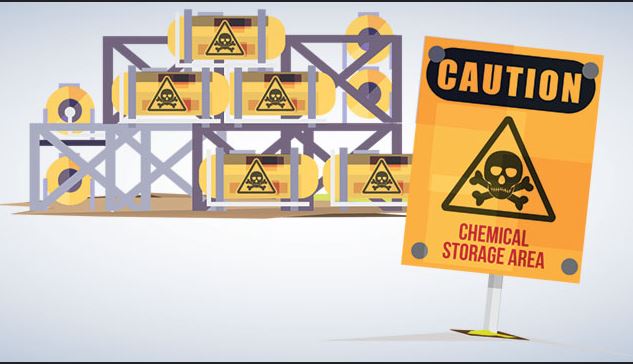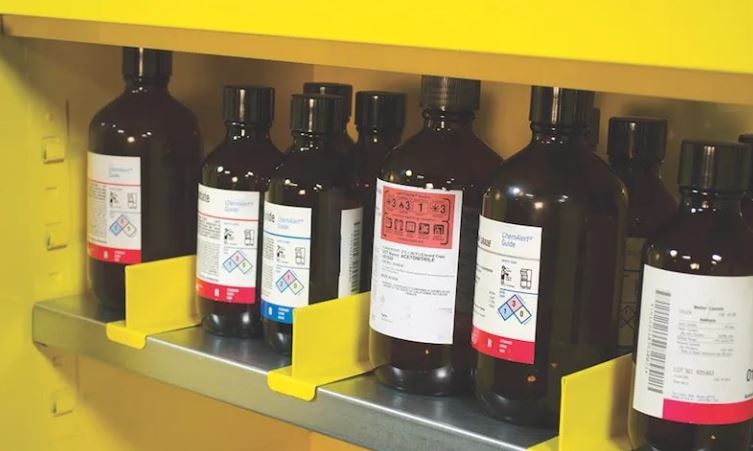Proper chemical storage is essential for maintaining safety in environments where chemicals are used or stored. Safe storage practices help prevent accidents, reduce the risk of exposure, and ensure compliance with safety regulations. Adhering to chemical storage guidelines protects both individuals and the environment from potential hazards.

Chemical Storage and Safety Guidelines
1. Classification and Labeling
Accurate Classification
Classify chemicals based on their properties, such as flammability, reactivity, toxicity, and environmental hazards. Proper classification helps determine the appropriate storage requirements and safety measures. For example, flammable chemicals should be stored in flame-proof containers, while reactive chemicals need separate storage areas to prevent dangerous reactions.
Clear Labeling
Ensure all chemical containers are clearly labeled with their contents, hazards, and handling instructions. Labels should include the chemical name, hazard symbols, and any relevant safety precautions. Accurate labeling helps prevent misuse and ensures that individuals handling the chemicals are aware of the risks involved.
2. Storage Conditions
Temperature and Ventilation
Store chemicals in environments that are suitable for their specific requirements. Some chemicals require refrigeration or controlled temperatures to maintain stability, while others need to be kept at room temperature. Proper ventilation is also crucial to prevent the buildup of toxic fumes or vapors. Use appropriate ventilation systems, such as fume hoods or exhaust fans, to maintain a safe environment.
Avoiding Sunlight and Moisture
Keep chemicals away from direct sunlight and moisture. Exposure to sunlight can cause some chemicals to degrade or react, while moisture can lead to hazardous reactions or contamination. Store chemicals in dark, dry areas to preserve their integrity and safety.
3. Segregation and Containment
Separation of Incompatible Chemicals
Store incompatible chemicals separately to prevent dangerous reactions. For example, acids and bases should be kept in separate storage areas, as their interaction can produce harmful fumes or explosions. Use dedicated shelves or storage units to ensure that incompatible chemicals do not come into contact.
Secondary Containment
Use secondary containment systems to manage spills and leaks. Secondary containment involves placing chemical containers within larger, spill-proof containers or trays to catch any accidental spills. This helps minimize the risk of environmental contamination and reduces cleanup efforts in case of a leak.
4. Security and Access Control
Restricted Access
Limit access to chemical storage areas to authorized personnel only. Implement security measures, such as locks or access control systems, to prevent unauthorized access and ensure that only trained individuals handle the chemicals. This helps reduce the risk of accidents and misuse.
Emergency Preparedness
Equip chemical storage areas with emergency response kits, including spill containment materials, fire extinguishers, and first aid supplies. Ensure that employees are trained in emergency procedures and know how to use the equipment. Regularly review and update emergency response plans to address potential risks and changes in storage practices.
5. Routine Inspections and Maintenance
Regular Inspections
Conduct routine inspections of chemical storage areas to ensure compliance with safety guidelines. Check for signs of leaks, damage, or improper labeling. Regular inspections help identify potential issues before they escalate and ensure that storage conditions remain safe.
Maintenance of Storage Equipment
Maintain and repair storage equipment, such as shelves, containers, and ventilation systems, as needed. Ensure that storage equipment is in good condition and functions properly to support safe storage practices. Replace damaged or outdated equipment promptly to prevent accidents.
Conclusion
Adhering to chemical storage and safety guidelines is crucial for preventing accidents and ensuring a safe working environment. Proper classification, labeling, and storage conditions, along with segregation and containment, contribute to effective chemical management. Implementing security measures, emergency preparedness, and routine inspections further enhances safety. By following these guidelines, organizations can minimize risks and protect both individuals and the environment from chemical hazards.




